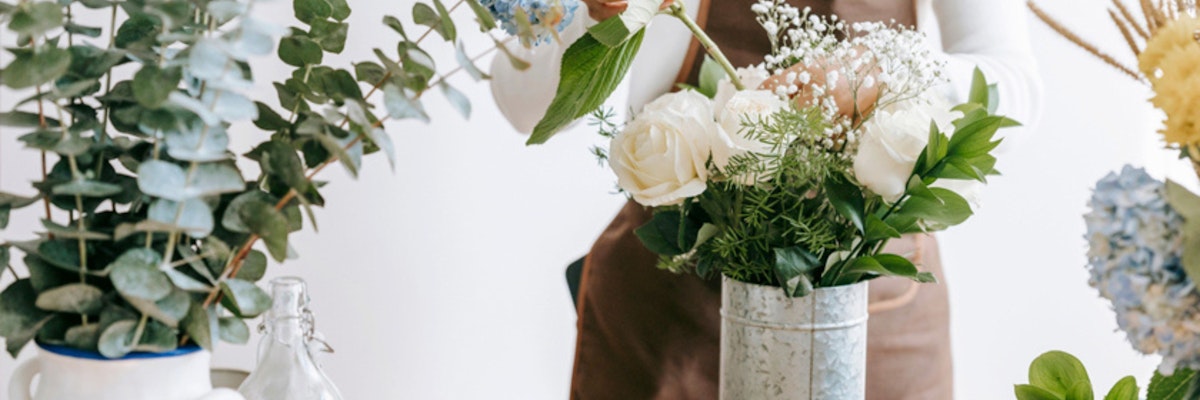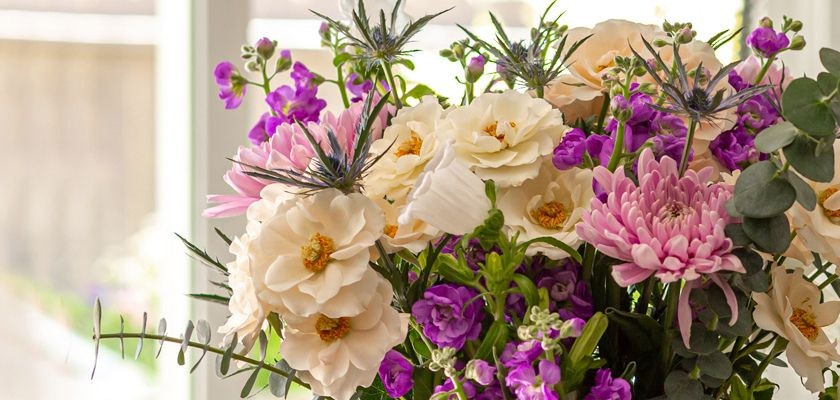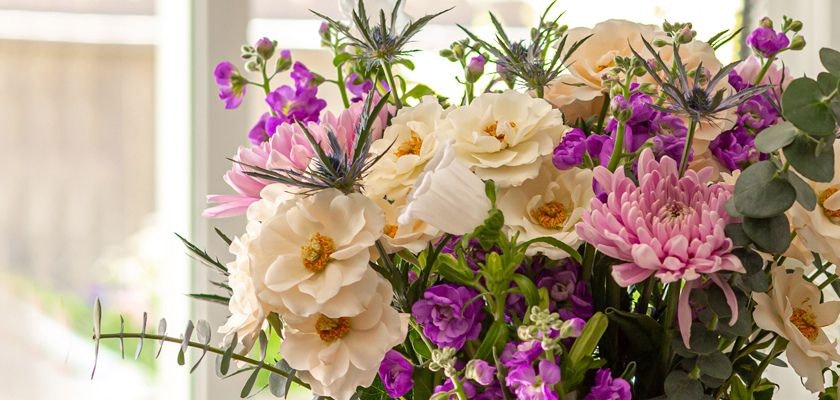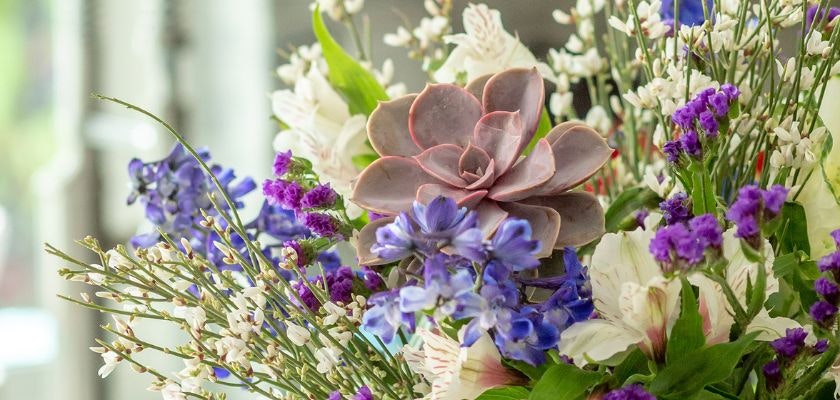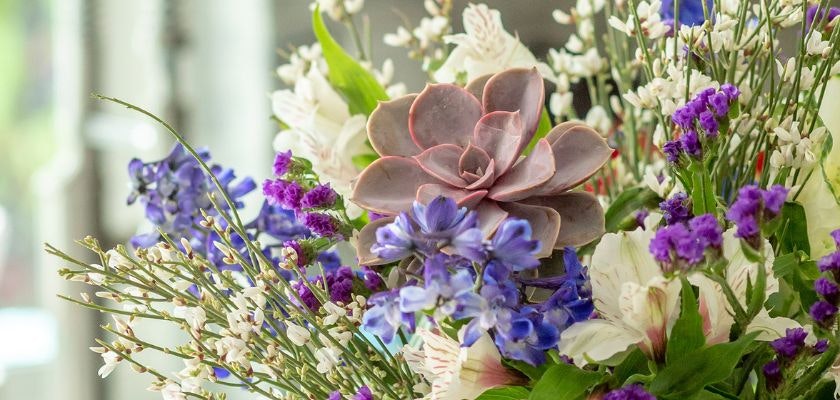Understanding Funeral Flower Etiquette and Traditions
Funerals are sacred ceremonies that allow families, friends, and communities to mourn together while honoring the life of a deceased loved one.
Understanding Funeral Flower Etiquette and Traditions
Among the many rituals associated with these gatherings, flowers play a universal and deeply symbolic role. Their beauty, aroma, and arrangement have long added meaning and grace to farewells across cultures. Funeral flowers transcend language, offering a serene way to express emotions like sympathy, love, and remembrance.
The tradition of giving flowers at funerals stems from their ability to convey messages that words sometimes cannot. Whether it’s the purity of white lilies or the eternal love symbolized by red roses, flowers reflect complex emotions while bringing serenity and beauty to a somber occasion. The careful selection of these floral tributes ensures respect for both the deceased and their grieving family.
Different cultures have their own funeral traditions surrounding flowers, reflecting unique beliefs about life, death, and the afterlife. Understanding these customs is vital to respecting the family’s cultural context. For instance, while chrysanthemums symbolize death in European countries, they represent devotion in Japanese funerals. These differences highlight the need for cultural sensitivity when selecting flowers for any service.
Beyond their cultural symbolism, funeral flowers help create an atmosphere of comfort and solace during a time of mourning. They fill spaces with warmth and serenity, encouraging mourners to reflect, connect, and find peace. Just as importantly, they commemorate the life and legacy of the departed, serving as a lasting testament to their memory.
Flower etiquette plays an integral role, guiding decisions on which blossoms and arrangements are appropriate for specific traditions. Missteps, like gifting brightly colored blooms for an Islamic funeral where simplicity is emphasized, can unintentionally cause misunderstanding. Familiarity with flower etiquette ensures thoughtful gestures that align with the occasion.
Sympathy gifts like floral arrangements work as an extension of your presence, even if you’re unable to attend the service. Whether it’s a standing spray or a simple bouquet, these offerings are a poignant way to express your support and bring comfort to the grieving family. Flowers remind mourners that they are cared for and surrounded by a community of love.
For modern convenience, platforms like BloomsyBox simplify the process of choosing appropriate and meaningful funeral flowers. With beautifully curated selections and customizable options, BloomsyBox ensures your floral tribute is heartfelt, elegant, and respectful of cultural practices. Their commitment to quality and personalization makes them a trusted choice during life's most emotional moments.
The Role of Flowers in Western Funeral Traditions
Western funeral traditions emphasize flowers as symbolic gestures of love, respect, and admiration for the deceased. Over centuries, certain blooms and their colors have been imbued with meaning, making their presence at funerals both expected and profound. Flowers not only serve to honor the departed but also provide comfort to the bereaved.
Lilies are among the most iconic blooms in Western funerals. Known as symbols of purity, peace, and the soul’s renewal, they are a staple in many floral arrangements. Often, white lilies are featured prominently in casket sprays, standing wreaths, and sympathy baskets, delivering a message of hope and sanctity in the face of loss.
Roses, too, are commonly used. Their meaning varies depending on their color. White roses, like lilies, represent purity and reverence, while red roses signify enduring love and courage. Light pink roses may symbolize grace and gratitude, which makes them appropriate for honoring someone who brought kindness and beauty into the lives of others.
Chrysanthemums hold special meaning in certain parts of Europe. They are strongly associated with death and mourning and are often reserved solely for funerals. The flower’s rich heritage as a symbol of remembrance makes them an ideal addition to grave decorations or floral tributes at European services.
Arrangement type follows strict etiquette in Western cultures. Immediate family members traditionally send the most elaborate floral tributes, such as casket sprays or large standing arrangements. Extended family, friends, and coworkers often opt for sympathy bouquets or smaller floral baskets, ensuring their offerings complement the main tribute without overshadowing it.
The choice of colors is equally significant. White is the most traditional color for Western funerals, representing peace and spiritual purity. Soft tones like pink, cream, or lavender are also commonly used for their soothing qualities. While colorful flowers may occasionally appear in modern services, they are typically chosen with care to reflect the deceased’s personality rather than for aesthetic vibrancy.
Personalized floral arrangements are becoming increasingly popular. People now honor the lives of their loved ones by incorporating favorite flowers, hobbies, or personal elements into the design. BloomsyBox offers the flexibility to create customized tributes that reflect the unique spirit of the individual, ensuring each arrangement tells a distinct and meaningful story.
For centuries, flowers have brought beauty and depth to Western funeral practices. They serve as vital components of tradition and healing, expressing emotions that go beyond words and connecting loved ones in moments of profound loss.
Funeral Flower Practices in Asian Cultures
Asian cultures share a deep reverence for flowers in their funeral traditions, though customs and significance can vary greatly between regions. Their selection and presentation are deeply symbolic, often reflecting beliefs about life, death, and spiritual harmony. Understanding these customs is crucial to participating meaningfully in Asian funerals.
White flowers dominate many Asian funerals, symbolizing mourning, purity, and respect. White lilies, orchids, chrysanthemums, and lotus flowers are all considered appropriate. Unlike in the West, where white connotes peace, in Asia it is inexorably tied to death and the afterlife. These blooms are used to express solemn grief and honor for the departed.
Chrysanthemums hold special importance in countries like China, Japan, and Korea. Often known as the “flower of death,” chrysanthemums are reserved almost exclusively for use in mourning rituals. Thought to represent the impermanence of life, they are placed at gravesites or incorporated into altars, highlighting themes of respect and remembrance.
The lotus flower carries profound symbolic weight in Buddhist and Hindu traditions. Renowned for its ability to bloom in muddy waters, the lotus is seen as a metaphor for purity, enlightenment, and hope for the soul’s peaceful transition. Lotus flowers frequently appear in Buddhist-oriented floral tributes, either as part of arrangements or as individual offerings.
Many Asian rituals pair flowers with other spiritual elements, such as incense or candles. Buddhist practices, for example, may include floral wreaths along with lit incense sticks as a gesture of reverence for ancestors or the recently departed. These combined offerings amplify the ceremonial significance of the farewell while providing a meditative ambiance.
Color symbolism in Asia also plays a vital role. White remains the color of mourning, but pastel shades like pink or lavender may be used sparingly to evoke peace and remembrance. Bright or celebratory colors are generally avoided, as they can clash with the solemn nature of the event. Careful adherence to these color norms ensures participants pay their respects in culturally sensitive ways.
Floral arrangements in Asia are often understated and minimalistic. Wreaths, bouquets, and elongated sprays are common, reflecting the simplicity and introspection of many traditional philosophies. Circular arrangements may symbolize the cyclical nature of life and death, adding an additional layer of metaphor to the display.
For those unfamiliar with Asian mourning practices, BloomsyBox offers resources and curated arrangements that align with these condolence customs. Their thoughtful selection of blooms ensures your tribute resonates with the cultural values of the bereaved family.
Funeral Flower Traditions in Middle Eastern Cultures
Middle Eastern funeral traditions are shaped by deep cultural and religious sensitivities, where flowers often hold a symbolic but understated role. While elaborate floral displays are less common due to Islamic teachings about modesty and simplicity, specific blooms and practices carry profound meaning. Understanding these customs can help participants honor the deceased with respect and sensitivity.
White flowers, such as lilies and jasmine, are often chosen for their association with purity and spiritual serenity. These blooms align perfectly with Islamic values, symbolizing the peaceful transition of the soul into the afterlife. When flowers are incorporated into Islamic funerals, they are typically presented in subtle arrangements to reflect the solemn nature of the ceremony.
Another practice involves the inclusion of herbs like rosemary or lavender as part of funeral tributes. These fragrant additions are not just decorative but are believed to provide spiritual protection and serve as symbols of remembrance. Small sprays or wreaths combining these elements can be seen at gravesites or incorporated into condolence offerings.
Sometimes, fresh rose petals or rosewater are sprinkled on graves during burial rites. Roses are revered not only for their beauty but also for their spiritual symbolism, representing divine love and eternal rest. This practice highlights the unique way Middle Eastern cultures intertwine the natural beauty of flowers with religious customs.
While color choices are usually conservative, soft, muted hues like pale purple or peach can sometimes be included to convey peace and condolence. Bright colors, however, are generally considered inappropriate as they may distract from the solemn and reflective nature of the event.
The use of floral arrangements varies depending on whether they are intended for the funeral ceremony itself or delivered directly to a grieving family. Smaller bouquets and modest floral baskets are often the most appropriate choices when expressing sympathy. These gestures ensure that the focus remains on honoring the deceased, rather than showcasing grandeur.
Navigating Middle Eastern floral customs may feel daunting, especially for those unfamiliar with the traditions. Companies like BloomsyBox make it easier by offering curated sympathy arrangements that align with cultural expectations. Whether it’s a modest bouquet of white lilies or an elegant tribute featuring jasmine, BloomsyBox ensures your gesture is both respectful and meaningful.
African Funeral Traditions and the Role of Flowers
Across the African continent, funeral traditions are as vast and varied as the cultures they represent. Flowers in African funerals often carry deep symbolic meanings, functioning as powerful tools for expressing grief, celebrating life, and reinforcing communal bonds. Understanding these customs adds a layer of thoughtfulness to attending or contributing to an African funeral.
White lilies, roses, and chrysanthemums are among the most popular funeral flowers in Africa, representing peace, purity, and eternal life. These blooms are often arranged into wreaths or standing sprays that are placed at funeral venues to honor the deceased. South Africa, in particular, incorporates formal floral tributes heavily influenced by European customs.
Certain African traditions emphasize a connection to the earth, and as a result, plant-based offerings such as succulents or native shrubs may be favored. These gifts symbolize endurance, eternal life, and harmony with nature. The longevity of such plants, as compared to cut flowers, makes them a unique and cherished form of sympathy gift.
The inclusion of vibrant colors in floral arrangements is another hallmark of African funerals. While white remains a universal symbol of peace, the addition of red, orange, or purple flowers reflects the celebratory aspect of honoring a person’s life. These bold colors are thought to embody the joy and gratitude for the deceased’s legacy, balancing the sorrow of loss.
Garlands, wreaths, and intricate patterns incorporated into floral arrangements often reflect cultural art and traditions. Symbols inspired by fabrics or tribal designs infuse personalization into the gesture, turning floral tributes into works of cultural significance. Communal involvement in such arrangements further amplifies the spirit of solidarity during moments of mourning.
Funerals are often community-centered events in African cultures. Floral tributes are not only an individual expression of grief but also a collective act of respect and unity. The care and thought that go into these offerings strengthen bonds between mourners and serve as a source of spiritual comfort.
For those unfamiliar with African traditions, platforms like BloomsyBox make the process simpler. Offering customizable arrangements and delivery services, BloomsyBox caters to both traditional and contemporary preferences, ensuring your contribution feels authentic and respectful.
Modern Trends in Sympathy Gifts and Funeral Flowers
The modern approach to funeral flowers has changed significantly, evolving to include more personalized and environmentally conscious choices. While traditional funeral flowers like lilies and roses continue to be staples, many people are now opting for unique and customized tributes that reflect the individuality of the person being honored.
Personalized arrangements have grown in popularity, as families strive to capture the essence of the deceased. These arrangements often include favorite flowers, specific colors, or designs that signify hobbies or passions. For instance, someone passionate about gardening might have a tribute featuring wildflowers, while a sports fan could be honored with arrangements in their team’s color palette.
Eco-friendly options are also becoming an important consideration in modern flower etiquette. Families are increasingly asking for arrangements made from sustainable or locally sourced blooms. Some are even opting for living plants, like potted orchids or succulents, which can be taken home and cared for as a long-lasting tribute.
Combined sympathy gifts are also becoming more common. These offerings pair traditional flowers with keepsakes such as candles, sympathy cards, or framed photos. This combination not only showcases thoughtfulness but also provides grieving families with something tangible to hold onto beyond the funeral service.
The importance of convenience and accessibility cannot be understated in today’s fast-paced world. Many people turn to trusted flower delivery platforms like BloomsyBox to handle sympathy gifts. BloomsyBox offers a wide range of modern and traditional options, making it simple to select and send the perfect arrangement. Their attention to detail and efficient service ensure that your gesture arrives beautifully and on time.
Understanding the evolving trends in funeral flower etiquette allows us to express condolences in ways that are both meaningful and reflective of today’s values. Whether it’s through personalized tributes or eco-conscious choices, the modern approach makes paying respects even more heartfelt and inclusive.
The delicate act of giving funeral flowers is steeped in traditions, cultural significance, and personal emotions. Across the world, these floral tributes serve as powerful expressions of sympathy, love, and remembrance. From the white lilies of Western ceremonies to the symbolic lotus flowers of Asian traditions, each bloom carries a meaning that transcends words.
Sympathy flowers not only honor the deceased but also provide comfort and solidarity for grieving families. These floral tributes serve as gentle reminders that they are surrounded by a community of love and support during their time of loss.
Understanding the intricacies of flower etiquette and regional funeral traditions ensures that your gesture feels both meaningful and appropriate. Whether adhering to Middle Eastern customs of simplicity, honoring African celebrations of life with vibrant colors, or personalizing a modern tribute, the attention to detail truly matters.
For those who find the process overwhelming, BloomsyBox.com offers a seamless way to choose the perfect sympathy arrangements. Their curated collections combine traditional symbolism with modern elegance, ensuring that each tribute reflects care and respect. With customizable options and a range of cultural considerations, BloomsyBox makes it easy to pay your respects thoughtfully.
To explore their selection of sympathy flowers and find inspiration for meaningful tributes, click here. BloomsyBox ensures that your condolences are expressed beautifully, helping you send a heartfelt message in times when words may not suffice.
Funerals may vary in custom and culture, but the universal language of flowers speaks to our shared humanity. They remind us of life’s beauty, even in the face of loss, and connect us in our collective respect for life and its legacy.
